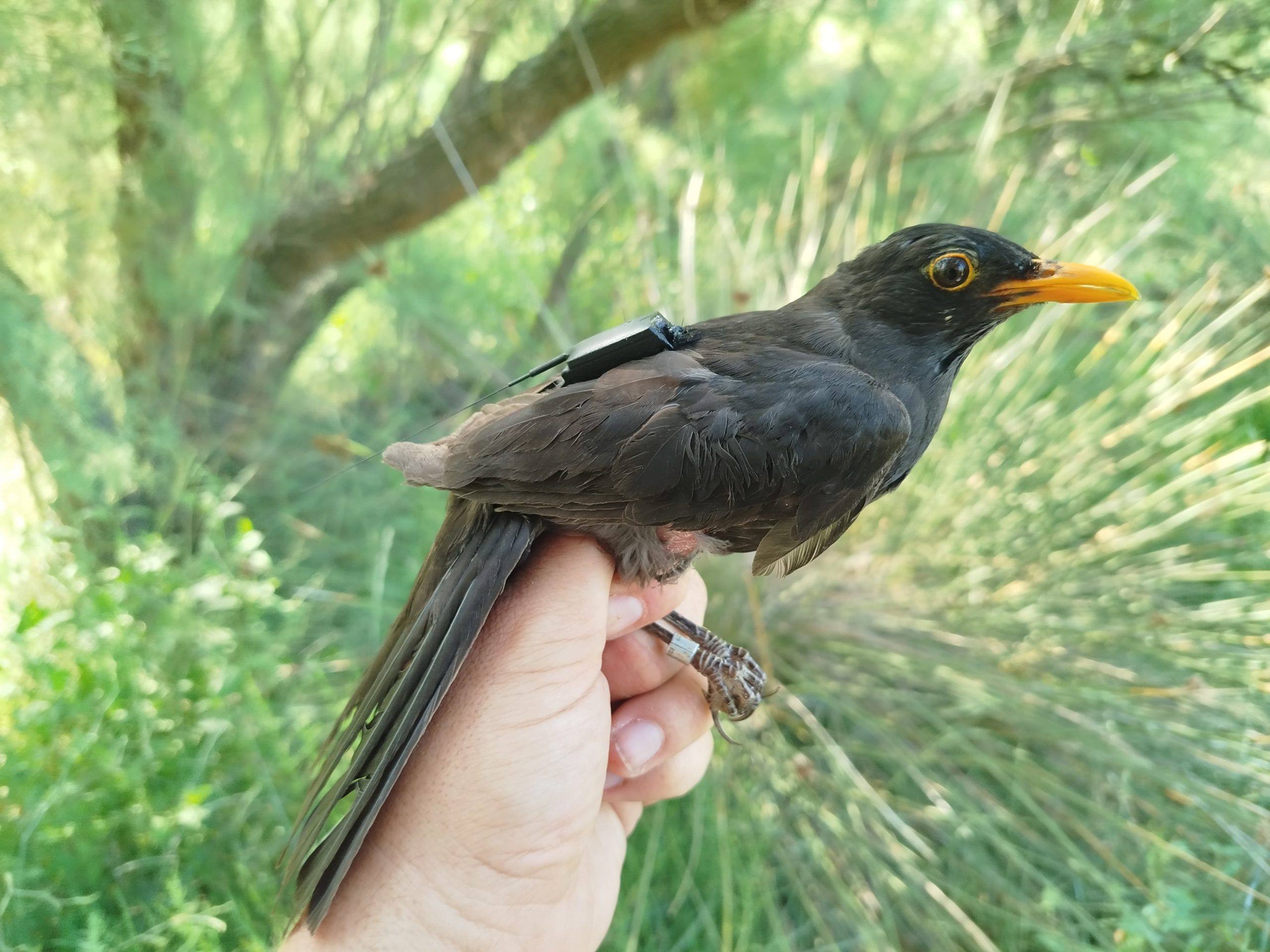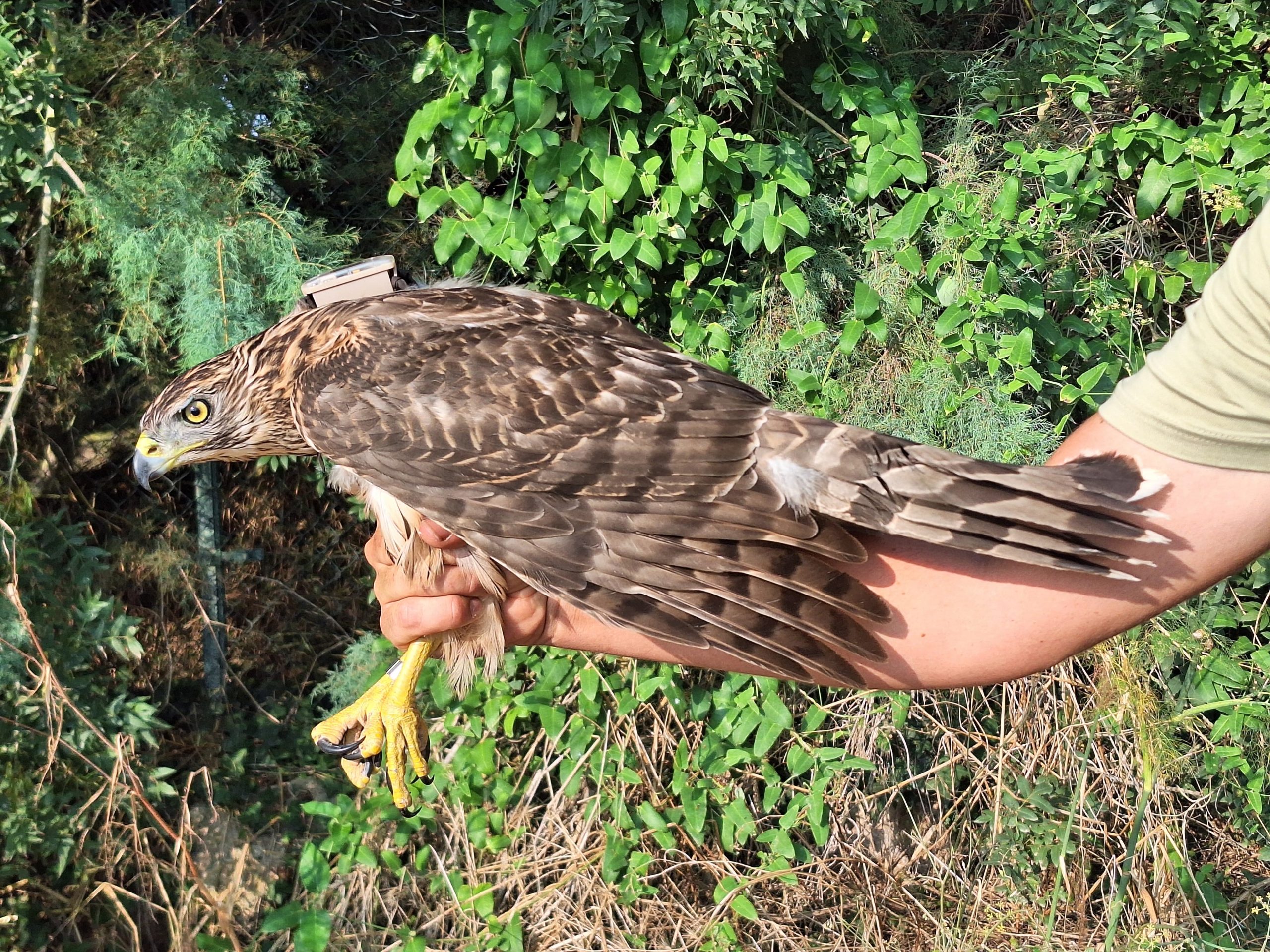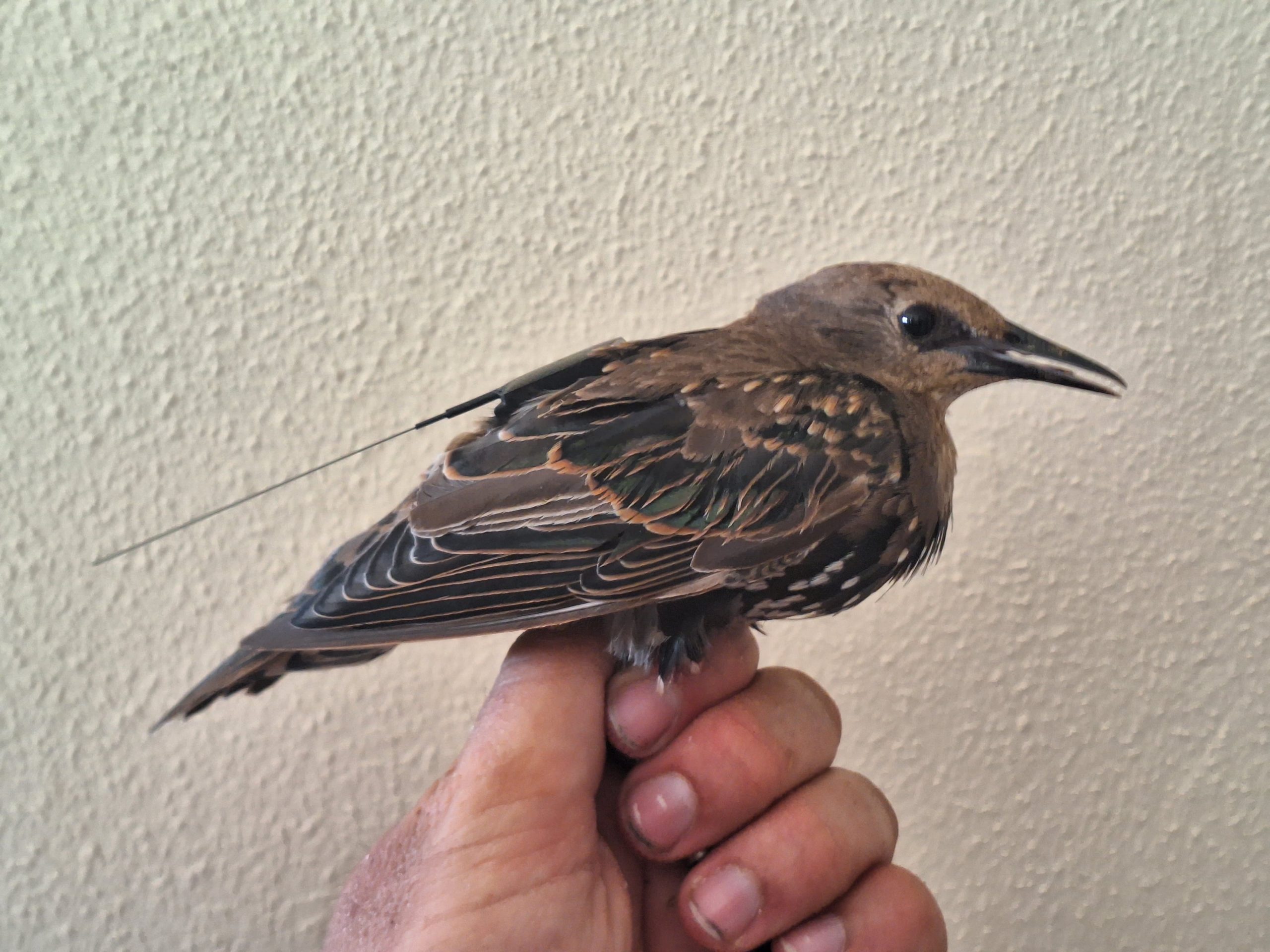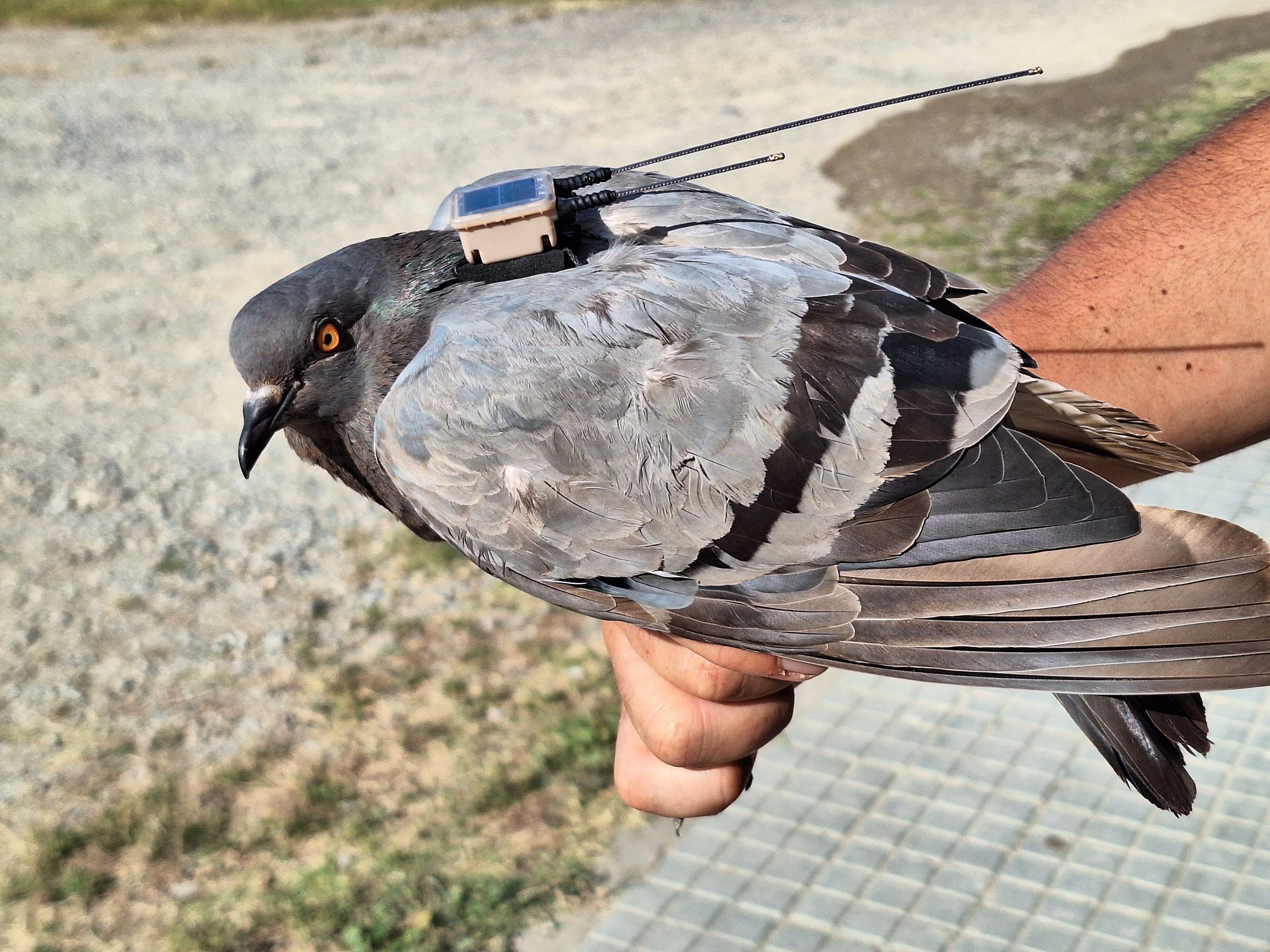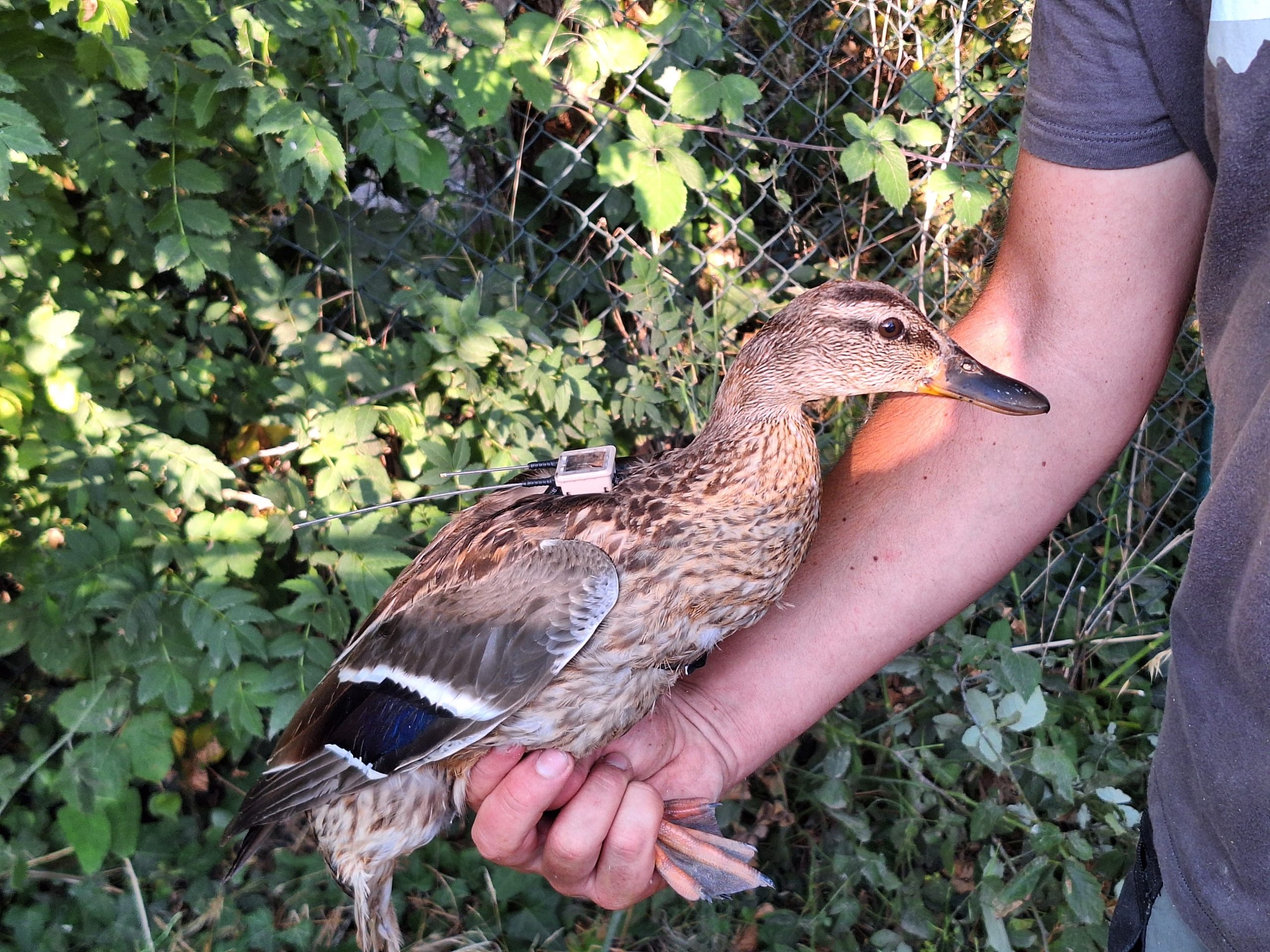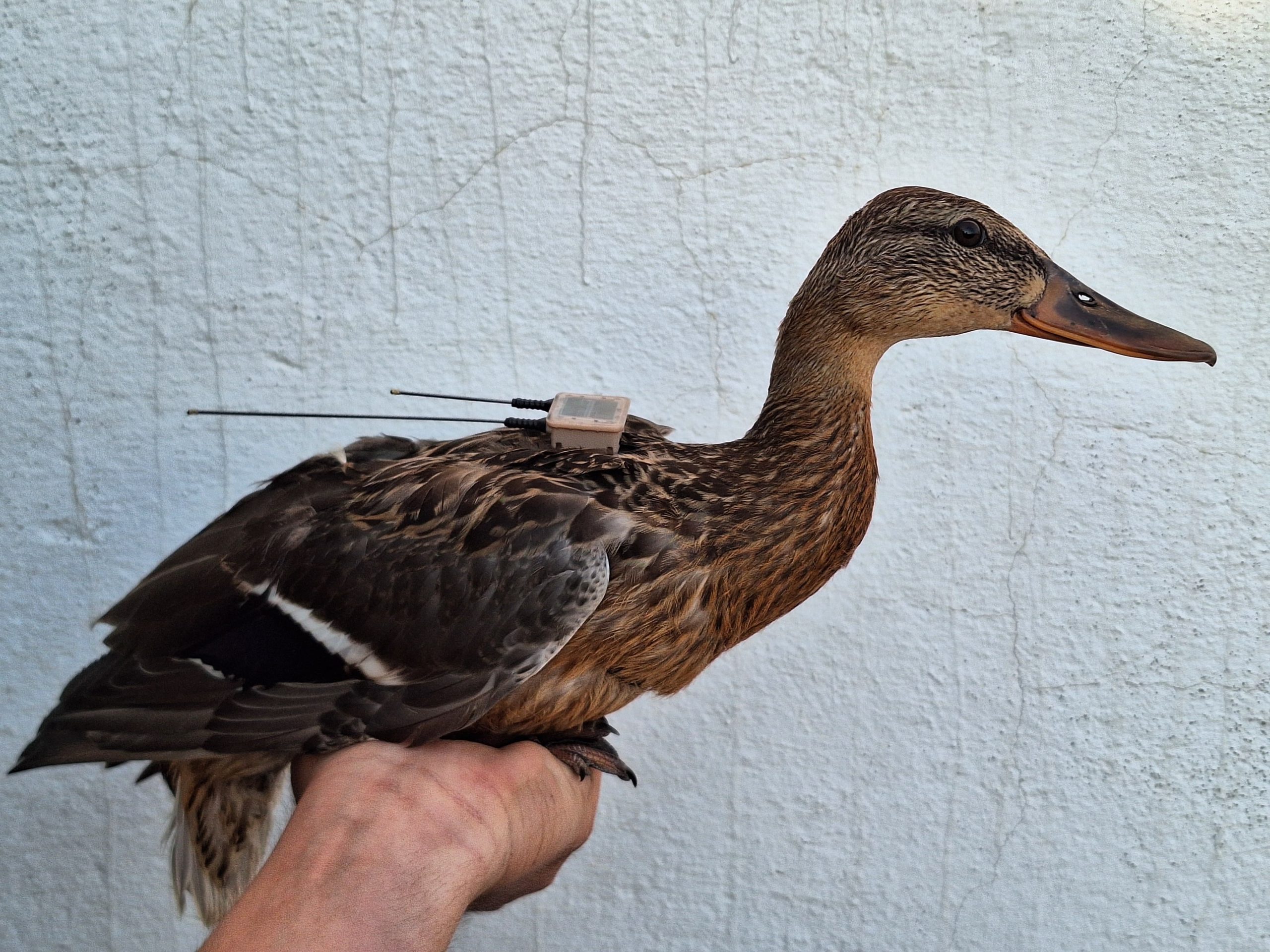During the summer of 2024, project partners in Spain and Germany have been actively tagging birds with bio-loggers at key study sites to monitor their local and regional movements. Understanding bird movements and space usage during mosquito season is essential, as birds are the primary reservoirs for West Nile Virus (WNV). This project focuses on quantifying the mobility of key reservoir species, filling a crucial gap in current research by examining the local movement and dispersal patterns of resident bird species. Unlike the more extensively studied migratory birds, resident birds’ space usage near human settlements has been less explored. By gathering empirical data on these local movements, we aim to enhance our understanding of how resident bird populations contribute to virus transmission in areas close to human activity.
Fieldwork involves capturing and tagging various bird species with bio-loggers provided by the Max Planck Institute (MPI). For smaller bird species, such as blackbirds (Turdus merula) and starlings (Sturnus vulgaris), we are using bio-logging devices developed by MPI that operate with SigFox technology. Although the SigFox IoT network offers lower spatial accuracy compared to satellite navigation, it supports the creation of particularly small devices thanks to the network’s low power demands requiring fewer electronic components. This allows tracking of smaller species with minimal impact on their natural behaviour. This innovative technology also allows for near real-time tracking and data transmission to the MovBank platform, making it ideal for monitoring the movements of these smaller species across different environments.
The data collected from these birds will be compared with similar data from other study sites within the project during the next years, allowing us to gain a deeper understanding of the potential WNV transmission dynamics across various landscapes. In addition to blackbirds and starlings, other species being tagged include mallards (Anas platyrhynchos), pigeons (Columba livia), and either western marsh harriers (Circus aeruginosus) or northern goshawks (Accipiter gentilis). The capture and tagging process began in June 2024 and will continue until September 2024, providing valuable insights into how these birds move through different landscapes and potentially contribute to the spread of WNV.
- Read more about the SigFox technology for animal tracking here: A multi-species evaluation of digital wildlife monitoring using the Sigfox IoT network.
